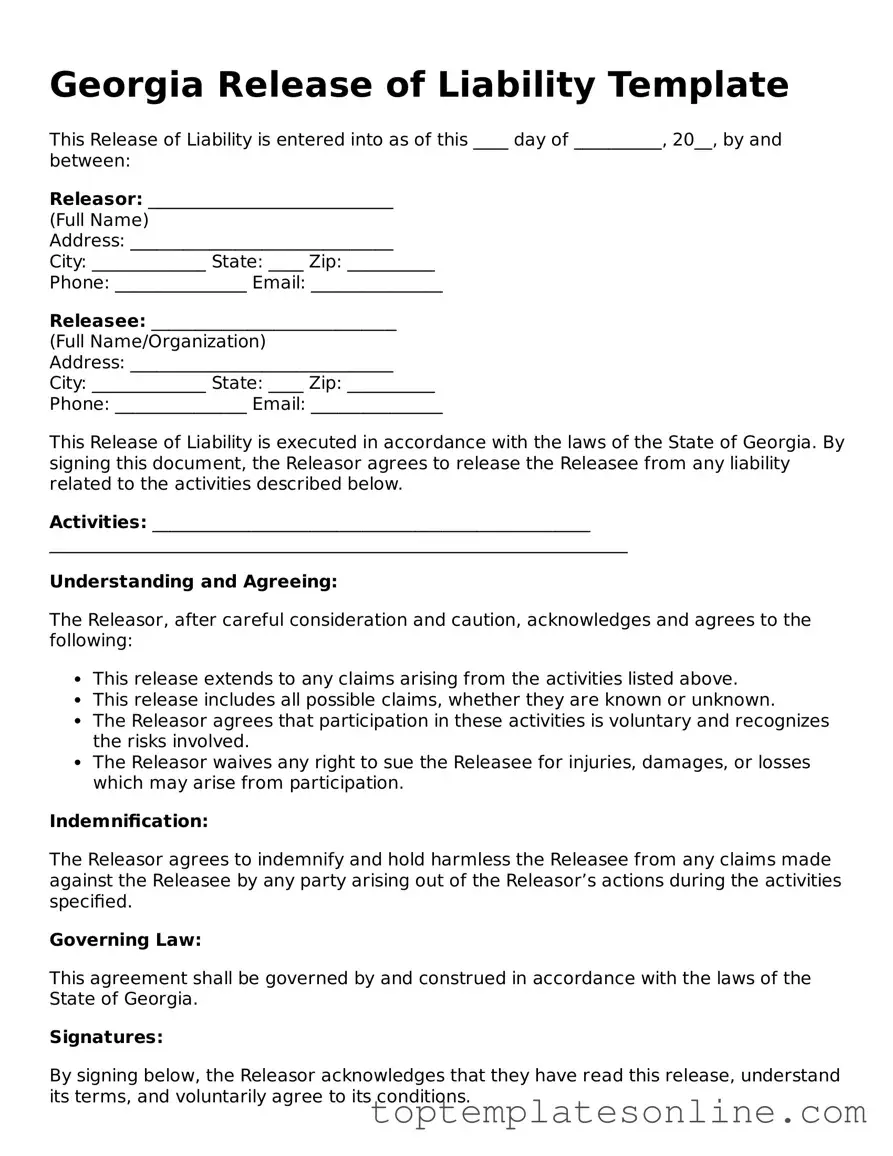Blank Release of Liability Template for Georgia State
The Georgia Release of Liability form is a legal document designed to protect individuals and organizations from liability for injuries or damages that may occur during specific activities. By signing this form, participants acknowledge the risks involved and agree not to hold the provider responsible for any resulting harm. Understanding this form is crucial for anyone engaging in activities that carry inherent risks, such as sports, recreational events, or other potentially hazardous undertakings.
Customize Release of Liability Here
